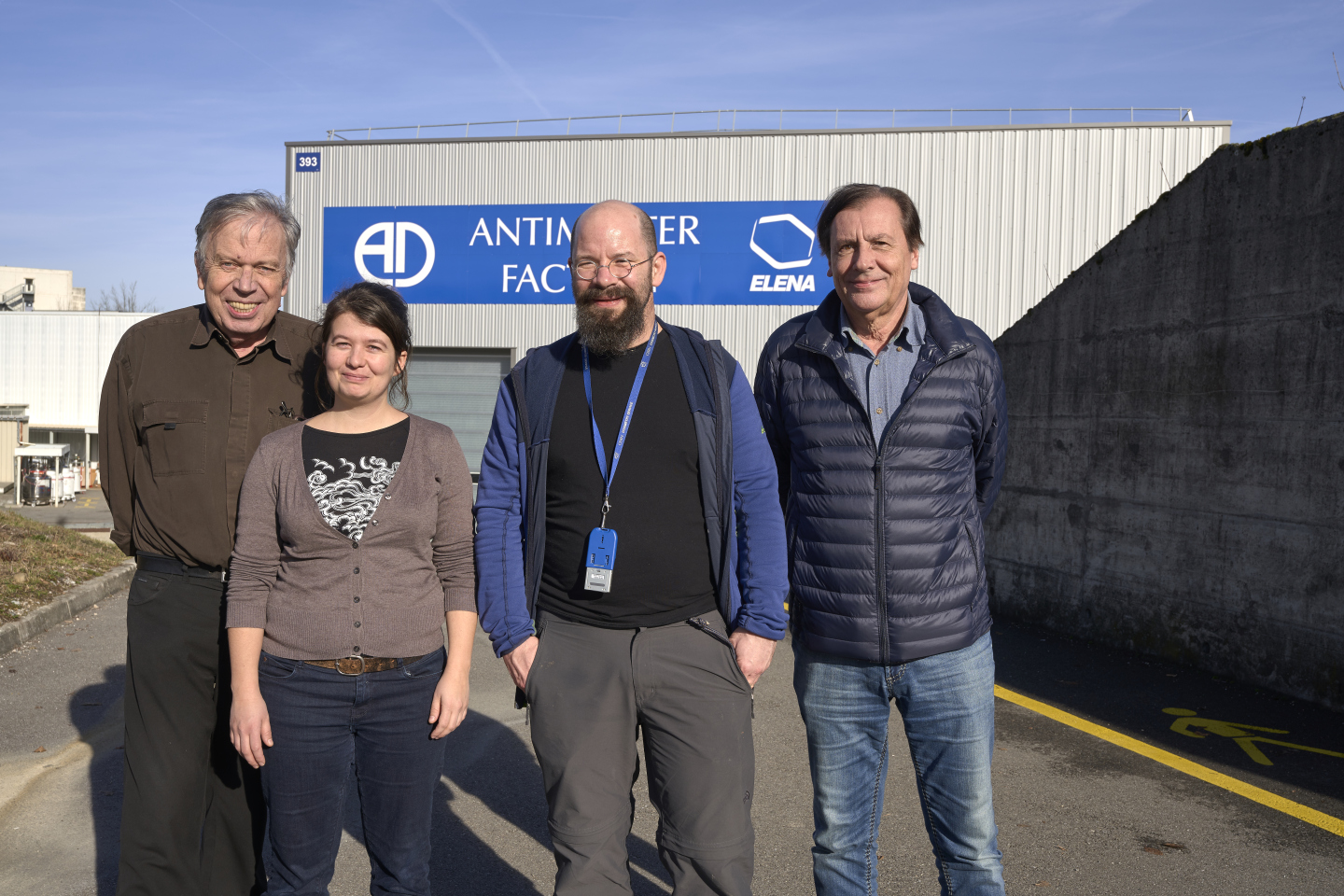CERN has two essential frontiers for new discoveries: the high-energy physics programme at the LHC and the low-energy precision studies at ISOLDE and the Antiproton Decelerator (AD). In recent years, several globally recognised milestone results have been achieved at the low-energy antiproton frontier. For the last 17 years, this programme has been chaired by Walter Oelert, who was joined by Horst Breuker as deputy chair in 2012. After those many years of fruitful, constructive and visionary service, new chairs Stefan Ulmer (RIKEN) and Chloé Malbrunot (CERN) were elected by the AD experiment spokespersons last October and took over on 23 January this year.
The chairs of the ADUC (Antiproton Decelerator Users Community) perform a variety of tasks. They represent the interests of the AD community in discussions with the CERN management. To this end, they are in regular contact with the spokespersons of the approved experiments, AEgIS, ALPHA, ASACUSA, ATRAP, BASE and Gbar. They organise the annual ADUC/ELENA meetings and propose the schedule for the distribution of beam time in collaboration with the PS/SPS coordinator.
Stefan Ulmer, the newly elected chair, is a chief scientist at RIKEN, Japan, and the founder and spokesperson of CERN’s BASE collaboration. He and his team at BASE have performed the most precise measurement of the proton magnetic moment ever achieved, as well as the most precise measurement of the proton-to-antiproton charge-to-mass ratio. In 2017, BASE reported a 350-fold improved measurement of the magnetic moment of the antiproton. In addition, Stefan has invented a reservoir trap technique that enables BASE to operate independently of the AD. Based on this method, he demonstrated the trapping of antiprotons for more than 405 days. For his work on high-precision comparisons of the fundamental properties of protons and antiprotons, he received the 2014 IUPAP Young Scientist Prize in Fundamental Metrology.
Chloé Malbrunot, the newly elected deputy chair, first came to CERN in 2005 as a summer student. Chloé received her PhD from the University of British Columbia in Vancouver, Canada. Her work on low-energy precision particle physics was carried out at Canada’s particle accelerator centre, TRIUMF. She came back to CERN in 2012 as a local leader of the Stefan Meyer Institute (SMI), Vienna, to work at the ASACUSA antihydrogen spectroscopy experiment. In 2013, she obtained a CERN research fellowship and joined the AEgIS experiment. Chloé has been a member of CERN’s research staff since 2016 and is still involved in both AEgIS and ASACUSA.
Walter Oelert led the team that observed the world’s first antihydrogen atoms in 1995. A member of the ATRAP experiment, he has been the ADUC chair since 2000. One of his achievements as ADUC chair was to initiate and organise a working group for the ELENA project. He represented the project at several meetings of the SPSC and the SPC. After the approval by the Research Board he participated in the construction of the machine.
Horst Breuker became CERN’s PS/SPS coordinator in 2009. At that time, he started to work on the ELENA project. At the beginning of 2013, he became a member of the ASACUSA collaboration.
New challenges await the ADUC and its chairs, due to the higher number of experiments and the new operating modes for physics at ELENA.
The outgoing chairs wish the new incumbents great success.

